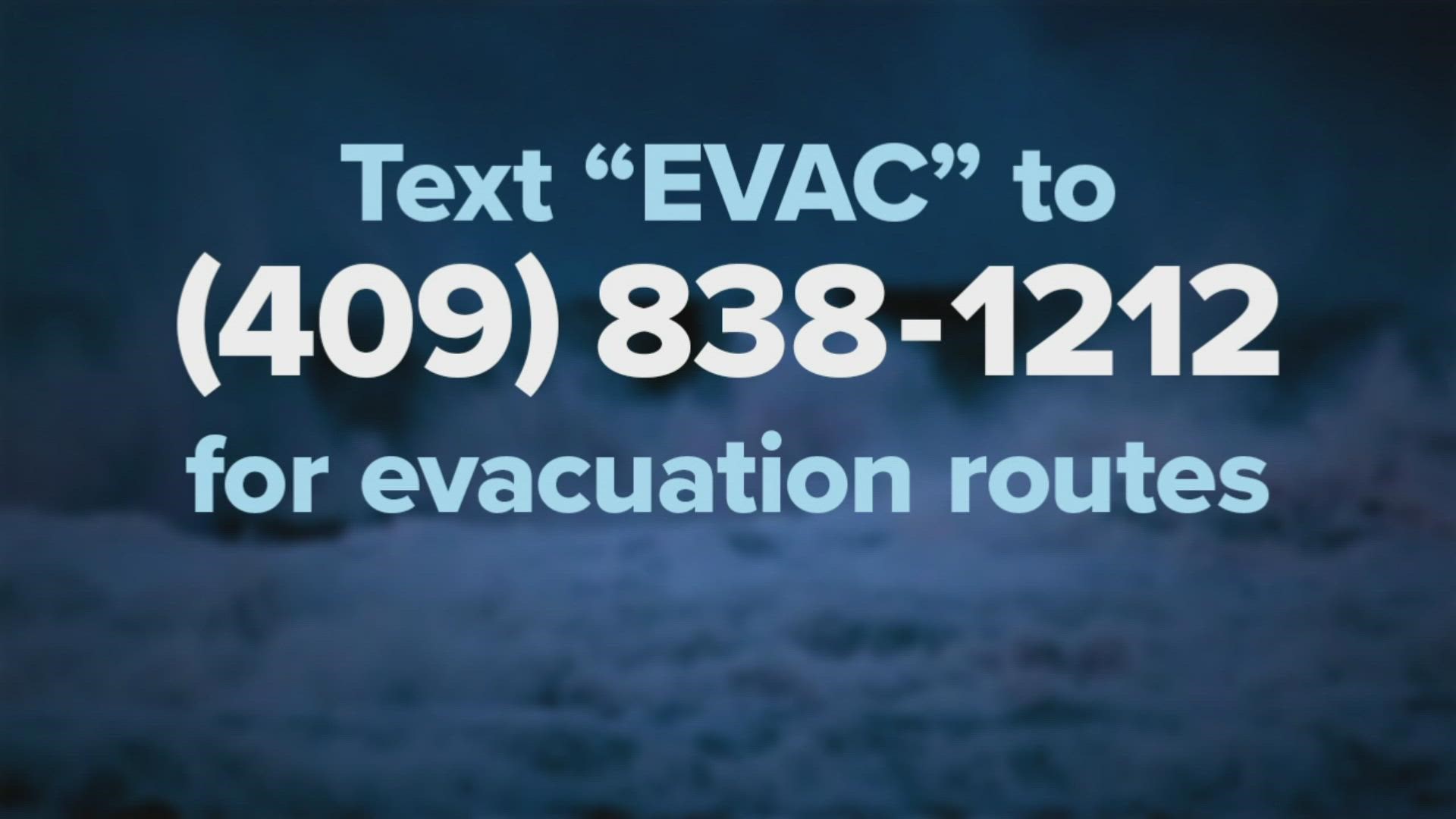As two storms churn in the Gulf of Mexico and inch toward land, now is the time to prepare.
Hurricane Laura is forecast to strengthen into a category three hurricane with landfall anticipated in Southwest Louisiana late Wednesday or early Thursday.
Forecasters said ocean water could push onto land along a more than 450-mile-long stretch of coast from Texas to Mississippi. Hurricane warnings were issued from San Luis Pass, Texas, to Intracoastal City, Louisiana; and storm surge warnings from the Port Arthur, Texas, flood protection system to the mouth of the Mississippi River.
The National Oceanic and Atmospheric Administration (NOAA) said it's important for families to know their zones, prepare an emergency kit and know how to stay safe during a storm, especially amid the coronavirus pandemic.
Emergency Kit
After an emergency, like a hurricane, it's best for families to prepare a collection of basic items that households may need in the event of an emergency.
The U.S. Department of Homeland Security recommends collecting the following items to make an emergency kit:
- Water (one gallon per person per day for at least three days, for drinking and sanitation)
- Food (at least a three-day supply of non-perishable food)
- Battery-powered or hand-crank radio and a NOAA Weather Radio with tone alert
- Flashlight
- First aid kit
- Extra batteries
- Whistle (to signal for help)
- Dust mask (to help filter contaminated air)
- Plastic sheeting and duct tape (to shelter in place)
- Moist towelettes, garbage bags and plastic ties (for personal sanitation)
- Wrench or pliers (to turn off utilities)
- Manual can opener (for food)
- Local maps
- Cell phone with chargers and a backup battery
Make a Family Emergency Plan
NOAA and the Federal Emergency Management Agency suggests families and close friends make a "Family Emergency Plan" to decide the best way to get in contact with one another during and after an emergency. Households should make a plan to know where to go and what to do in an emergency.
NOAA said the community should also follow instructions issued by local officials and leave immediately if ordered.
Know the Evacuation Routes
Before an evacuation, residents should know the best routes to safely get out of an area.
Ready.gov suggests:
- Identify several places to go in an emergency such as a friend’s home in another town or a motel. Choose destinations in different directions so that you have options during an emergency.
- If needed, identify a place to stay that will accept pets. Most public shelters allow only service animals.
- Be familiar with alternate routes and other means of transportation out of your area.
- Always follow the instructions of local officials and remember that your evacuation route may be on foot depending on the type of disaster.
Secure the Home
The National Weather Service suggests residents should prepare their homes before a storm hits.
The best course of action is to cover all of the home's windows with permanent storm shutters or board up windows with 5/8 inch exterior grade or marine plywood, built to fit, and ready to install.
Organizations recommend homeowners purchase the supplies before the hurricane season rather than waiting for the pre-storm rush.
NOAA also suggests:
- Keep trees around a home trimmed well before a storm to prevent damage from broken branches
- Bring loose outdoor items (like patio furniture) inside so they can't blow around and cause damage during a storm
- Secure all doors properly
- Move cars inside a garage to another secure location
Learn Hurricane Hazards
The biggest safety hazards from tropical cyclones -- which include tropical depressions, tropical storms, and hurricanes -- are storm surge flooding, inland flooding from heavy rains, destructive winds, tornadoes and high surf and rip currents, according to the National Weather Service.
- Storm surge is the abnormal rise of water generated by a storm's winds. This hazard is historically the leading cause of hurricane-related deaths in the United States. Storm surge and large battering waves can result in large loss of life and cause massive destruction along the coast.
- Storm surge can travel several miles inland, especially along bays, rivers, and estuaries.
- Flooding from heavy rains is the second leading cause of fatalities from landfalling tropical cyclones. Widespread torrential rains associated with these storms often cause flooding hundreds of miles inland. This flooding can persist for several days after a storm has dissipated.
- Winds from a hurricane can destroy buildings and manufactured homes. Signs, roofing material, and other items left outside can become flying missiles during hurricanes.
- Tornadoes can accompany landfalling tropical cyclones. These tornadoes typically occur in rain bands well away from the center of the storm.
- Dangerous waves produced by a tropical cyclone's strong winds can pose a significant hazard to coastal residents and mariners. These waves can cause deadly rip currents, significant beach erosion, and damage to structures along the coastline, even when the storm is more than a 1,000 miles offshore.
COVID-19 Personal Safety
The U.S. Department of Homeland Security issued steps for community members to take to stay safe during an emergency amid the coronavirus pandemic.
The agency suggests:
- If someone must go to a community or group shelter remember to follow the latest guidelines from the Centers for Disease Control and Prevention (CDC) for protecting yourself and family from COVID-19.
- Be prepared to take cleaning items like soap, hand sanitizer, disinfecting wipes, or general household cleaning supplies to disinfect surfaces you may need to touch regularly.
- Maintain at least 6 feet between you and persons not part of your immediate family while at the shelter (by avoiding crowds or gathering in groups) as much as possible.
- Anyone over 2 years old should use a cloth face covering while at these facilities.
- Only use generators outdoors and away from windows.


